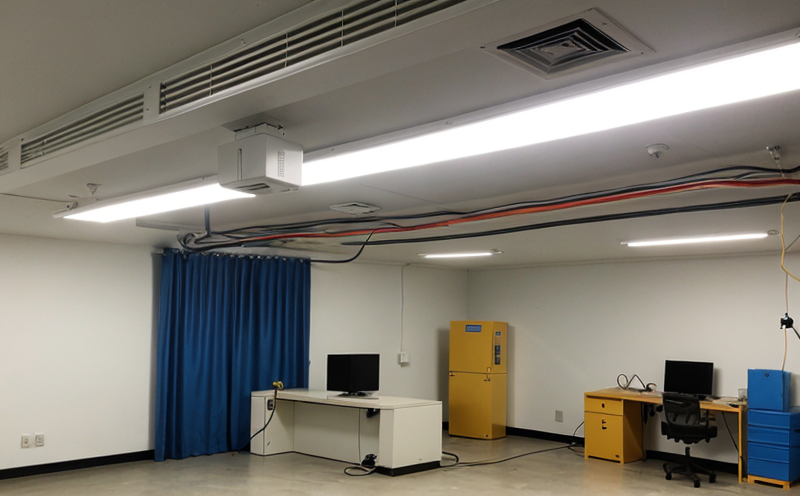EN 12464-2-2 Outdoor Workplace Lighting
The EN 12464-2-2 standard is a European specification that sets out the requirements for outdoor workplace lighting. This standard ensures that workplaces are adequately illuminated to ensure safety and comfort for all users, including employees and visitors. Compliance with this standard is essential in many sectors, particularly those where working conditions could be hazardous due to low visibility.
The primary focus of EN 12464-2-2 is to provide a framework for the design, installation, and maintenance of outdoor lighting systems that meet ergonomic, safety, and functional requirements. The standard covers various aspects, including light levels, uniformity, glare control, and visual comfort.
One of the key objectives of this standard is to reduce accidents and errors by ensuring that there are no areas in the workplace where shadows or poor visibility could lead to tripping hazards or other risks. This is particularly important for outdoor workplaces such as construction sites, warehouses, parking lots, and industrial facilities.
The EN 12464-2-2 standard also addresses the importance of visual comfort by specifying that lighting should not cause discomfort due to glare. Glare can be a significant issue in outdoor environments where sunlight interacts with artificial light sources. The standard provides guidance on how to design and install lighting systems to minimize glare, ensuring that the lighting is both safe and comfortable for all users.
The methodology outlined in EN 12464-2-2 involves several key steps:
- Conduct a risk assessment of the workplace to identify potential hazards related to poor lighting.
- Determine the appropriate light levels required based on the tasks performed and the characteristics of the environment.
- Select suitable luminaire types, luminous flux, and mounting heights to meet the specified light levels and uniformity requirements.
- Install and maintain the lighting system according to manufacturer's instructions.
The standard also emphasizes the importance of regular maintenance checks to ensure that the lighting systems continue to perform as intended. This includes checking for any faults, cleaning the luminaires, and adjusting their positions if necessary.
In summary, EN 12464-2-2 is a crucial standard in ensuring the safety and comfort of workers in outdoor workplaces by providing clear guidelines on how to design, install, and maintain adequate lighting systems. Compliance with this standard can help prevent accidents and ensure that all users have a safe working environment.
Applied Standards
| Standard Reference | Description |
|---|---|
| EN 12464-2-2 | Outdoor workplace lighting requirements. |
Scope and Methodology
The scope of EN 12464-2-2 covers the design, installation, commissioning, operation, and maintenance of outdoor workplace lighting systems. The standard aims to ensure that these systems meet ergonomic, safety, and functional requirements.
The methodology for conducting tests according to this standard includes several key steps:
- Identify the specific requirements of the workplace in terms of light levels, uniformity, glare control, and visual comfort.
- Select appropriate luminaire types based on these requirements.
- Calculate the luminous flux required for each luminaire to meet the specified light levels.
- Determine the mounting height for each luminaire to ensure adequate coverage over the entire workplace area.
- Install and commission the lighting system according to manufacturer's instructions.
- Conduct regular maintenance checks at specified intervals to ensure continued compliance with the standard.
The testing process involves measuring light levels, uniformity, and glare using specialized equipment. This data is then used to verify that the lighting system meets all the requirements set out in EN 12464-2-2.
International Acceptance and Recognition
- EN 12464-2-2 is widely accepted across Europe, ensuring consistency and standardization of outdoor workplace lighting practices.
- The standard has been adopted by many countries outside the EU as well, reflecting its global relevance.





